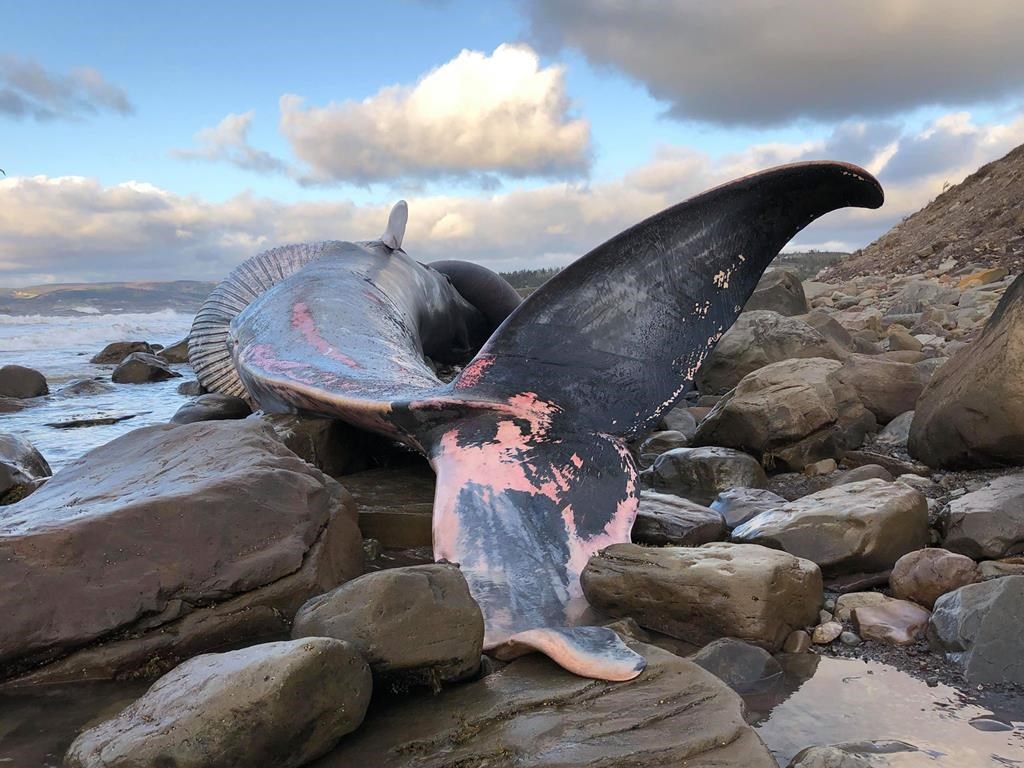The death of a young blue whale off Cape Breton is drawing the attention of an expert on the species who would like to know if it’s the latest case of a fatal ship strike in the Gulf of St. Lawrence.

The body was spotted last week at Sutherland’s Cove, about six kilometres north of Port Hawkesbury, N.S., and was confirmed by the Marine Animal Response Society to be a juvenile just under 17 metres long.
However, the federal Fisheries Department hadn’t confirmed by late Tuesday whether the body will be towed to a suitable location for a necropsy.
Richard Sears, a scientist with the Mingan Island Cetacean Study who is based in St-Lambert, Que., said Tuesday it’s important to know what killed the whale.
READ MORE: Slow response to right whale plight could have impact on Canadian fisheries
The biologist, who has studied blue whales for 41 years, says the species has faced risks from ship strikes and fishing gear entanglements in the gulf.
In addition, there is evidence that underwater acoustic noise and toxic pollutants is harming the blue whale population, he added.

Get daily National news
“It wouldn’t hurt to do a necropsy to see what killed it …. I think there’s a good chance if they do a necropsy they’ll find the skeleton was damaged, and probably it’s a ship strike,” the researcher said in an interview. Sears said photos of the dead whale suggest the whale had been in good condition prior to its death.
Blue whales are the largest creatures on Earth, and have a potential lifespan of 70 to 80 years. There has been a federal recovery plan for the whales off Canada’s east coast for over 17 years, and federal scientists estimate there are no more than 250 in the population.
READ MORE: DFO closes part of Bay of Fundy after 5 right whales spotted
Sears said that in addition to human-related deaths his team has been concerned about relatively low reproductive rates of the blue whales in the Gulf of St. Lawrence. He said last year there were seven or eight births tracked in the gulf, but in other years there have just been one to three.
“The blue whales may be increasing slowly in eastern Canadian waters, but there are still some disturbing trends …. We’re barely at 31 calves in 41 years of observing,” he said.
The scientist says he believes speed restrictions for vessels should be in place for shipping throughout the gulf, rather than in certain sectors.
“Basically, the St. Lawrence is like a huge wildlife reserve, and slowing ships down in one place doesn’t mean they won’t strike an animal in another,” he said.
Most recent attention on whale deaths has focused on the endangered North Atlantic right whales. Eight right whales have died in Canadian waters this summer, out of a population numbering only about 400 animals.
Canada instituted measures following 12 right whale deaths in 2017, including altering shipping lanes and reducing vessel speeds in some areas, along with increased surveillance, fishery closures and dynamic or moving closures based on the sighting of right whales in a particular area.








Comments